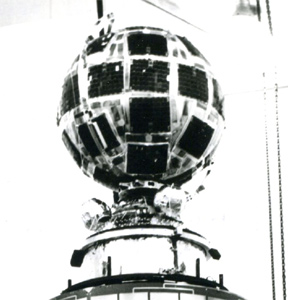 Explorer (56) (DADE-A) satellite | |
| Names | DADE-A Dual Air Density Explorer-A DADE-B Dual Air Density Explorer-B |
|---|---|
| Mission type | Earth science |
| Operator | NASA |
| COSPAR ID | 1975-DADE-A |
| Mission duration | Failed to orbit |
| Spacecraft properties | |
| Spacecraft | Explorer LVI |
| Spacecraft type | Dual Air Density Explorer |
| Bus | DADE |
| Manufacturer | Langley Research Center |
| Launch mass | 40 kg (88 lb) |
| Power | Solar cells and batteries |
| Start of mission | |
| Launch date | 6 December 1975, 03:35:01 UTC [1] |
| Rocket | Scout F-1 (S-196C) |
| Launch site | Vandenberg, SLC-5 |
| Contractor | Vought |
| End of mission | |
| Deactivated | Failed to orbit |
| Orbital parameters | |
| Reference system | Geocentric orbit (planned) |
| Regime | Polar orbit |
| Perigee altitude | 350 km (220 mi) |
| Apogee altitude | 350 km (220 mi) |
| Inclination | 90.10° |
| Period | 90.00 minutes |
| Instruments | |
| Atmospheric Composition Mass Spectrometer Atmospheric Drag Density | |
Dual Air Density Explorer was a set of 2 satellites, DADE-A and DADE-B, developed as part of NASA's Explorer program. DADE-A and DADE-B were launched on 6 December 1975 at 03:35:01 UTC, [1] by a Scout F-1 launch vehicle from Space Launch Complex 5, Vandenberg Air Force Base, California. The launch of the DADE satellites failed. [2] [3]
